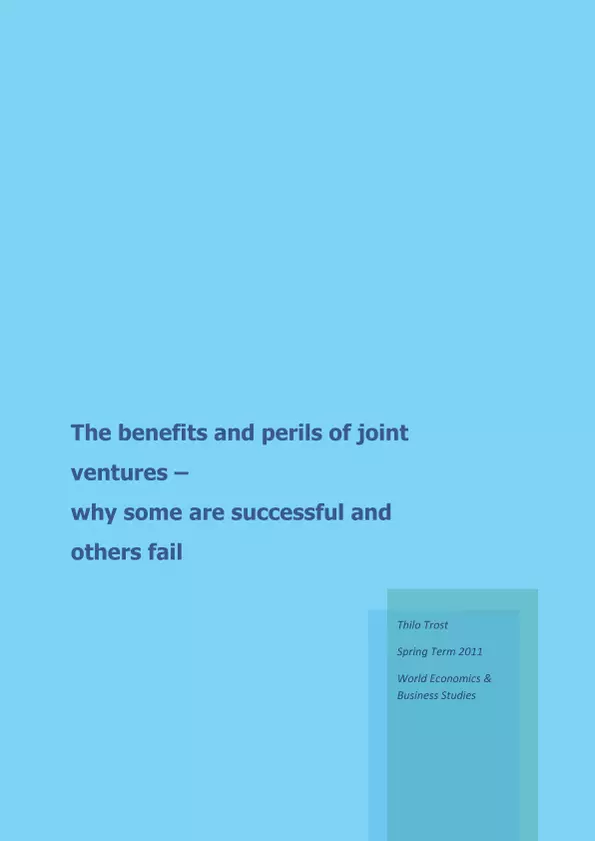The concept of the joint venture was developed in the United States. First, we need to make
a distinction between purely contractual, non-equity joint ventures, on the one hand, and
equity or corporate joint ventures, on the other.
The regular form of joint venture is a company that is founded out of equity provided from
two other entities. This venture is similar to a business partnership but limited to a specific
project or purpose.
The equity joint venture manifests the founding firms‟ willingness to
cooperate by providing each a certain percentage of the common capital stock as illustrated
in the graphic below (in this case with each partner providing half of the capital stock).There
are countless ways to build up an equity joint venture with each partner providing only a
certain percentage of the common capital stock (e.g. 70/30%, 90/10%, 51/49% and so
forth). The firms gain control over the founded joint venture and share revenues, expenses
and assets in equal proportion to their respective contributions to the venture‟s registered
capital. Differing arrangements are possible.
Over the last decade, we were able to witness rapidly growing companies, some of them
seeking for partnerships to take advantage of positive synergy effects to gain in size or to
enter new foreign markets. The topic of this essay should be why firms seek to venture,
what the benefits of venturing are and why some firms fail after the venture, what are
the downsides of this concept?
Inhaltsverzeichnis (Table of Contents)
- Intro - What is a joint venture?
- Why do firms venture?....
- Entering foreign markets.
- Reasons to venture become competitive advantages – the benefits...
- Problems and common reasons to fail - the perils.
- Designing ventures that work
- Conclusion ........
- References.
Zielsetzung und Themenschwerpunkte (Objectives and Key Themes)
This essay aims to explore the motivations behind joint ventures, examine the benefits they offer, and analyze the reasons for their failures. It delves into the concept of joint ventures, exploring both the equity and contractual forms, and examines their applicability across domestic and international markets.
- Motivations for firms to engage in joint ventures.
- Benefits of joint ventures, including access to new markets, shared resources, and competitive advantages.
- Common challenges and pitfalls associated with joint ventures.
- Factors contributing to successful joint venture design and implementation.
- The distinction between equity joint ventures and contractual joint ventures.
Zusammenfassung der Kapitel (Chapter Summaries)
The introductory chapter defines joint ventures, distinguishing between equity and contractual forms. It emphasizes the significance of equity joint ventures as the primary focus of the essay. The subsequent chapters delve into the motivations behind firms venturing, exploring reasons such as entering foreign markets and gaining competitive advantages. It also examines the benefits associated with joint ventures, including access to new markets, shared resources, and enhanced technological capabilities. The essay then addresses the common pitfalls and challenges encountered by joint ventures, highlighting factors such as cultural differences, communication barriers, and conflicts of interest. The concluding chapter provides insights into designing successful joint ventures, focusing on strategic planning, effective communication, and a strong legal framework.
Schlüsselwörter (Keywords)
The key terms and focus topics of this essay include joint ventures, equity joint ventures, contractual joint ventures, foreign market entry, competitive advantage, strategic alliances, synergy effects, cultural differences, communication barriers, legal frameworks, and design principles. The essay delves into both the benefits and perils associated with joint ventures, analyzing the factors that contribute to their success or failure.
- Quote paper
- Thilo Trost (Author), 2011, Joint Ventures: The benefits and perils - why some are successful and others fail, Munich, GRIN Verlag, https://www.grin.com/document/178267



